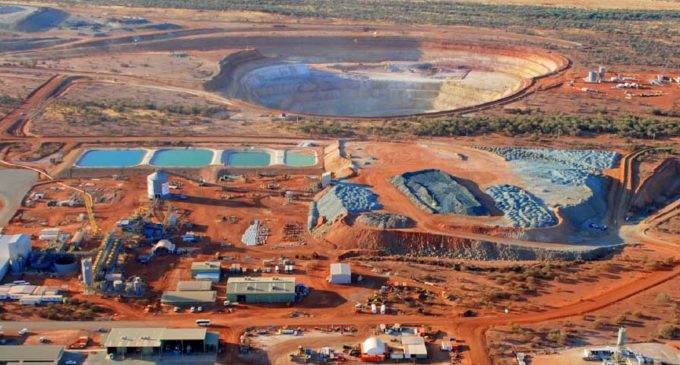As recent project announcements show, the number of Australian mining operators seriously assessing and investing in renewables is growing rapidly. Driven by favourable economics and additional benefits including carbon reductions and social license, major and mid-tier Australian mines are adopting renewables.
South32 recently announced its 3MW solar farm for its Cannington mine in Queensland for which SunSHIFT is providing its re-deployable solar solution. Once complete, this will be the second largest solar project for a remote, off-grid Australian mine.
Similarly, Image Resources is investing in a 3-4 MW solar farm adjacent to its Boonanarring mine and processing plant, which are currently under construction. This ‘behind the meter’ solution will deliver around 25% of the facilities electricity needs. GMA Garnet, a leading supplier of garnet used in blasting and water jet cutting, has locked in energy prices for the next 13 years for its Western Australia operations through a long-term power purchase agreement for wind and solar.
OZ Minerals also recently announced plans to build a solar and battery storage facility at its Prominent Hill mine in South Australia, and is looking at further investments in renewables to support other projects in the region. The mine also became the first resource company to sign a transmission cost partnership with a renewables developer through its recent deal with SolarReserve.
Finally, New Century Resources is investing in SunSHIFT’s portable and scalable solar system to supply power for the refurbishment of its Century mine at $120/MWh which is a fraction of the $400/MWh it had been paying to run diesel during Care & Maintenance. And Copper Mines of Tasmania (CMT) has an ambitious plan to make Mt Lyell on Tasmania’s west coast Australia’s first zero-emissions mine through investments in electrification and renewables.
In addition to these projects, there is quite simply a wealth of major mines and mid-tier leaders at various stages of assessing and approving renewable energy investments for remote and grid-tied sites. While these projects are not yet public, many will be showcased at this year’s Energy and Mines Australia Summit on June 27-28 in Perth.
“What we are seeing is quite a transformation in the market around mining companies’ appetites to adopt renewable energy generation,” comments Will Rayward-Smith, General Manager, SunSHIFT. “Scalability is very important because mining companies want to include a renewable option but may not want to progress to a high penetration system straight away.”
“At sites where we also integrate wind, the mine can offset more than 70% of its fossil fuel usage,” observes Amiram Roth-Deblon, Head of Global Business Initiatives, juwi Renewable Energies. “We are currently designing such solar-wind-battery hybrids for multiple sites in Western Australia.”
“Interest in combining renewables with islanded thermal power stations is increasing across the globe. This also extends to the use of battery storage for various applications including the reduction of spinning reserve. Regions such as Australia and Africa show the greatest promise, with Latin America and the Pacific Island nations also providing opportunities for the use of these technologies,” says Matthew Currie, Sector Manager – New Markets at Aggreko.
Michel Carreau, Director Hybrid Power at Hatch, explains that Hatch too has been very active in working with the mining industry to design hybrid power projects around the globe, “from conceptual design to implementation, we are combining renewable power – wind, solar, biomass cogeneration, geothermal – with conventional power to offset fossil fuel consumption and mitigating the impact heat recovery reductions. Hatch are particularly focused on high penetration hybrid power projects that reduce more than 50% of the fossils fuel consumption by leveraging our expertise in microgrid controls and energy storage. We look forward to sharing our experience at the Summit in June.”
“The University of Adelaide is assessing ways to bring increased sustainability to mining and mineral processing. We are doing this by investigating the use of Australia’s abundant renewable energy, particularly solar, to process our minerals. While the nation and world are on a clear path to decarbonising power production, the low carbon futures for the two other big energy forms – fuels and process heat – are less clear. These are challenges we have set ourselves,” says Dr. Chris Matthews, Manager of the Institute for Mineral and Energy Resources at the University of Adelaide.
This heightened activity has positioned Australia as the fastest growing market for renewables for mines. The main driver, of course, is economics. Depending on locally available wind and solar conditions, fuel savings from hybridisation can amount to up to 75%, according to juwi Renewable Energies.
The cost of solar modules is also falling by 3 to 8 percent annually. Battery storage is also becoming more economical with Bloomberg New Energy Finance predicting lithium-ion batteries will be priced at 73 USD/kWh in 2040 as compared to around 250 USD/kWh in 2017.
Senior mining representatives will meet with global renewable energy experts in Perth this June 27-28 to discuss renewables integration. This 2nd annual Energy and Mines Australia Summit, features presenters from BHP, Sandfire Resources, Fortescue Metals Group, Rio Tinto, South32, Nyrstar, Oz Minerals, Australian Vanadium, Panoramic Resources, Montezuma Mining Company, Resolute Mining and Gold Fields.
Meanwhile, the business case for renewables integration is being underlined by successful landmark projects including Sandfire Resources’ DeGrussa Solar Project and Rio Tinto’s Weipa Solar Farm. Currently, the DeGrussa project is offsetting more than 450,000 litres of diesel per month, which adds up to more than 25 million litres of diesel saved over 5 and half years or around 20% of the mine’s total fuel consumption.

